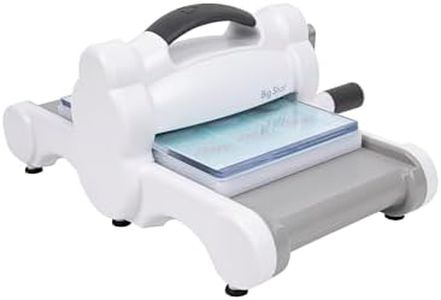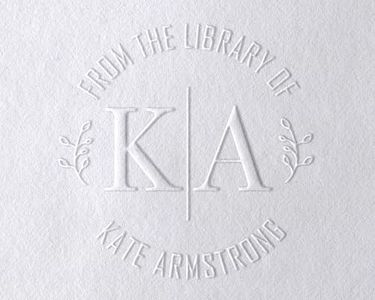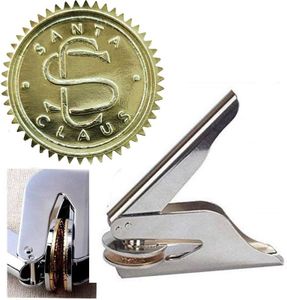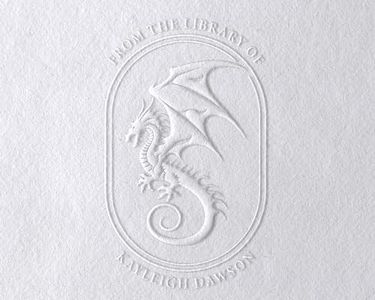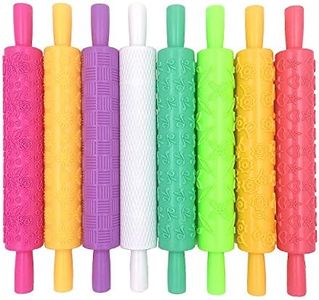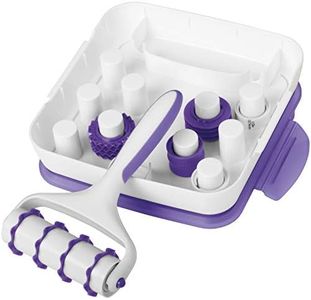We Use CookiesWe use cookies to enhance the security, performance,
functionality and for analytical and promotional activities. By continuing to browse this site you
are agreeing to our privacy policy
10 Best embossers
From leading brands and best sellers available on the web.Buying Guide for the Best embossers
Choosing an embosser involves understanding both the quality of the stamp it produces and how suitable it is for your specific needs, whether that's for personal, professional, or creative projects. Before making a decision, think about what you'll be embossing (paper, cards, envelopes, etc.), how frequently you'll use it, and whether you want manual or electronic operation. By carefully reviewing a few key features, you can ensure your embosser will be reliable, easy to use, and deliver clear, professional-looking results.Type (Handheld vs. Desk)The type of embosser refers to how the device is used and positioned when embossing materials. Handheld embossers are portable and designed for light duty, making them easy to use for small jobs like personalizing envelopes, business cards, or seals. Desk embossers, on the other hand, are larger, rest on a flat surface, and typically provide more leverage, making them a better choice for frequent use or for embossing thicker materials. Consider how often and where you'll be using the embosser—if you plan to use it occasionally and value portability, handheld is likely best; if you need it for regular or heavy-duty use, a desk model will be more comfortable and durable.
Material CompatibilityMaterial compatibility describes what types and thicknesses of materials the embosser can handle effectively. Some embossers are designed for standard paper and envelopes, while others can handle heavier card stock, certificates, or even light plastic. Before purchasing, think about the materials you will emboss most often. If you only plan to emboss standard office paper or envelopes, most embossers will suffice. However, for specialty papers or heavier materials, look for an embosser that specifically supports those thicknesses to avoid jams or weak impressions.
Impression Size and DesignThe impression size is the diameter or area of the raised design the embosser creates. Common sizes are around 1 to 2 inches wide or tall. The size and shape you need depends on what you're embossing; larger impressions can accommodate more detailed designs or text, while smaller ones are subtler and better for saving space on small items. The design refers to the actual image or text the embosser will apply. Some embossers come with customizable plates so you can personalize the stamp, while others have fixed designs. Choose the size and design based on how visible you want the embossing to be and what information or logo you need.
Ease of UseEase of use covers aspects like grip comfort, how much force is needed to make a clear impression, and how simple it is to change plates or settings if the embosser allows customization. If you have limited hand strength or plan to emboss many items at once, look for ergonomic handles or lever mechanisms that require less effort. For occasional users, ease of use might not be as critical, but for frequent users, comfort and simplicity can make a big difference.
Orientation and ReachOrientation refers to whether the embosser is designed for top, bottom, left, or right positioning on the page. Reach is about how far from the edge of the material the impression can be made. Some embossers only work close to the edge, while others allow you to emboss farther into the page. Consider where you want your embossed mark to appear (e.g., center vs. corner of a certificate). For simple corner or edge embossing, a basic reach is enough; for more creative placements, look for an embosser with extended reach.
Durability and Build QualityDurability means how long the embosser will last and how well it will hold up to repeated use. Build quality often depends on the materials used; embossers made with metal components are typically more robust and have a longer lifespan than those made mostly of plastic. If you need an embosser for frequent commercial or office use, choose one with a solid, metal build. For light personal use, a lighter-duty model may be sufficient.

